Visiting Ancient Ruins and Archaeological Sites

As human beings, we are inherently curious about our past and how our ancestors lived. One way to quench this thirst for knowledge is by visiting ancient ruins and archaeological sites.
These sites are remnants of long-lost civilizations and offer a glimpse into the lives of our predecessors. A journey through time, visiting these sites can be a life-changing experience that opens your eyes to a world long gone.
Archaeological sites and ruins can be found all over the world, from the jungles of South America to the deserts of the Middle East. Each site has its unique history and tells its own story.
The Importance of Archaeology
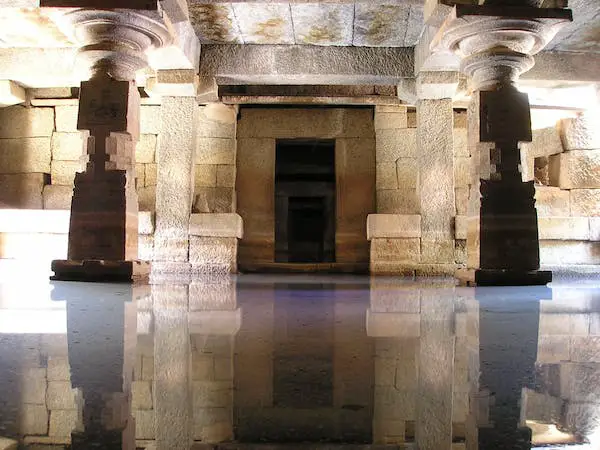
Archaeology is a field that plays a vital role in helping us understand and appreciate the history and cultural heritage of human societies. Here are some key reasons why archaeology is so important:
Preserving Cultural Heritage: Archaeological sites provide us with tangible evidence of past societies, their customs, beliefs, and daily lives. They offer a glimpse into the material and immaterial culture of past societies, and can help us understand the evolution of human societies over time.
Advancing Knowledge: Archaeological research provides us with new information about the past, which can help us understand how societies functioned, how they interacted with each other, and how they evolved. The knowledge gained from archaeological research is not only valuable to researchers, but also to educators, students, and the general public.
Discovering New Things: Archaeological excavations have led to the discovery of many new artifacts, structures, and even entire cities that were previously unknown. These discoveries have expanded our understanding of past societies and challenged our assumptions about the past.
Informing the Future: By studying the past, archaeologists can help us make better decisions about the future. For example, by understanding how past societies adapted to climate change, we can develop strategies to help modern societies cope with the challenges of climate change.
Protecting the Environment: Archaeological research can also help us understand how humans have interacted with the environment in the past. This knowledge can inform our current efforts to protect the environment and conserve natural resources.
In summary, archaeology is an important field that helps us preserve cultural heritage, advance knowledge, discover new things, inform the future, and protect the environment.
Without archaeology, we would have a much more limited understanding of the past, and our ability to make informed decisions about the future would be compromised.
Famous Ruins and Sites
There are countless ancient ruins and archaeological sites around the world, each with its own unique history and cultural significance. Here are just a few examples of some of the most famous and visited archaeological sites:
The Pyramids of Giza, Egypt
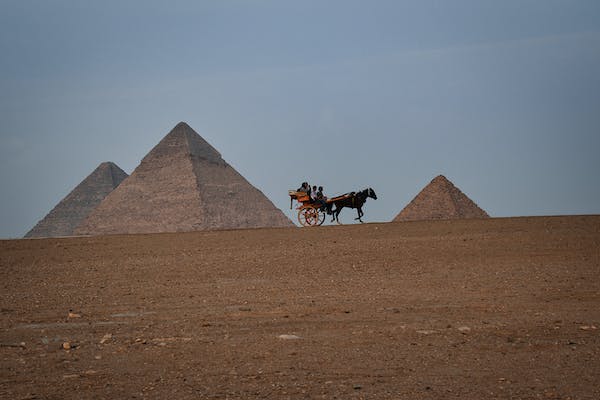
The Pyramids of Giza are a group of three ancient pyramids located in the Giza plateau, near the city of Cairo in Egypt. They were built as tombs for the pharaohs Khufu, Khafre, and Menkaure, and are considered to be some of the most impressive architectural achievements of ancient times.
The largest of the three pyramids, known as the Great Pyramid or Pyramid of Khufu, is the oldest and was built around 2560 BC.
It is also the largest pyramid in Egypt, standing at 147 meters (481 feet) tall. The second pyramid, known as the Pyramid of Khafre, was built around 2520 BC and is slightly smaller at 136 meters (446 feet) tall. The smallest of the three, the Pyramid of Menkaure, was built around 2490 BC and stands at 65 meters (213 feet) tall.
The pyramids were constructed using large blocks of limestone and granite, and were originally covered in smooth white casing stones that have since been removed.
The interior of the pyramids contains a series of chambers and passages that were designed to protect the pharaoh's body and possessions for eternity.
The Pyramids of Giza continue to be a major tourist attraction in Egypt, drawing visitors from all over the world. They are also considered to be one of the Seven Wonders of the Ancient World
The Colosseum, Rome
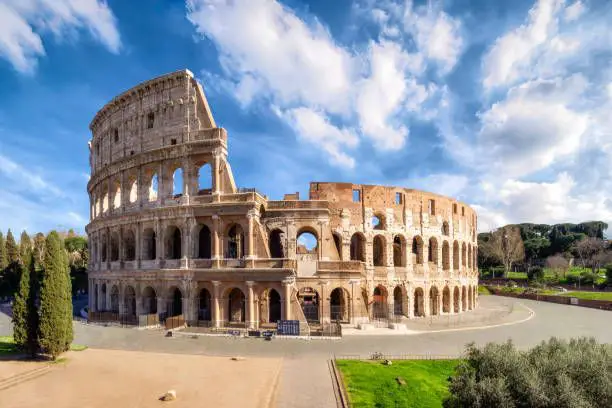
The Colosseum, also known as the Flavian Amphitheatre, is an ancient amphitheatre located in Rome, Italy. It was constructed in 70-80 AD during the reigns of emperors Vespasian and Titus and is considered one of the most iconic landmarks of Rome.
The Colosseum was used for various public spectacles, such as gladiatorial contests, animal hunts, and mock sea battles.
It could hold up to 50,000 spectators and was designed to allow for quick access and exit of the crowds. The building is made of stone and concrete, and is estimated to have taken over 5 years to build.
The Colosseum is a symbol of the power and might of the Roman Empire, and is a testament to the incredible engineering and architectural skills of its builders.
Despite being damaged by earthquakes, fires, and looting throughout the centuries, it remains an important cultural and historical monument, and is visited by millions of people each year.
Today, the Colosseum is a major tourist attraction in Rome, and visitors can explore the interior of the building, as well as learn about the history and significance of this iconic structure.
Machu Picchu, Peru
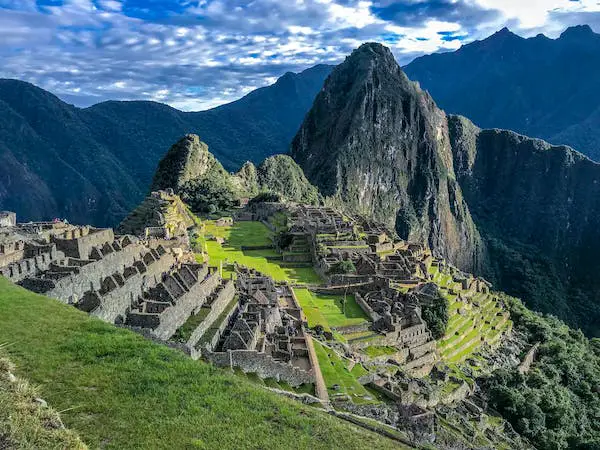
Machu Picchu is an ancient Incan citadel located in the Andes Mountains of Peru, South America. It was built in the 15th century and is believed to have been a royal estate or religious site for the Incan Emperor Pachacuti.
Machu Picchu is located at an altitude of 2,430 meters (7,970 feet) above sea level, and was built using large stone blocks without the use of mortar. The citadel is divided into two main areas: the agricultural zone and the urban zone.
The agricultural zone contains terraces and buildings used for farming, while the urban zone contains the main temple, the royal residence, and other ceremonial buildings.
Machu Picchu was abandoned by the Incas during the Spanish conquest in the 16th century, and was not rediscovered until 1911 by American archaeologist Hiram Bingham. Since then, it has become a major tourist destination, attracting millions of visitors each year.
Machu Picchu is considered to be one of the most important archaeological sites in the world, and was declared a UNESCO World Heritage Site in 1983. Its stunning architecture and unique location in the Andes Mountains make it a must-see destination for anyone interested in history and culture.
Petra, Jordan
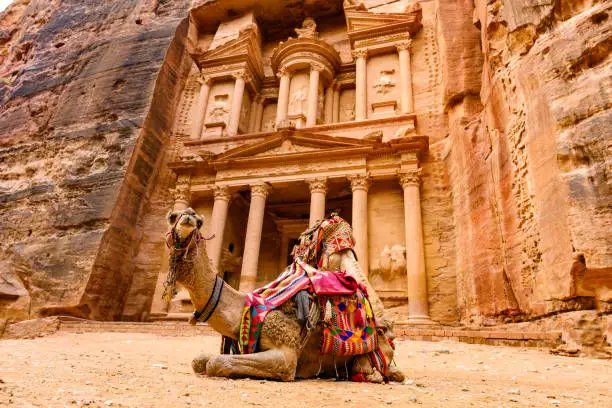
Petra is an ancient city located in the southwestern region of Jordan. It was founded by the Nabataean people around 312 BC and became a major trading hub in the Middle East due to its strategic location at the crossroads of important trade routes.
Petra is famous for its stunning architecture, which is carved directly into the pink sandstone cliffs of the region. The most famous structure in Petra is the Treasury, which is also known as Al-Khazneh in Arabic. This elaborate temple is over 2,000 years old and features intricate carvings and ornate details.
Petra was a prosperous city for several centuries, but eventually declined in the 4th century AD due to changes in trade routes and natural disasters.
The city was rediscovered in the early 19th century by Swiss explorer Johann Ludwig Burckhardt and has since become a major tourist destination, attracting visitors from around the world.
Petra is considered one of the most important archaeological sites in the world and was declared a UNESCO World Heritage Site in 1985. Its unique architecture, stunning natural surroundings, and rich history make it a must-visit destination for anyone interested in ancient civilizations and culture.
The Great Wall of China
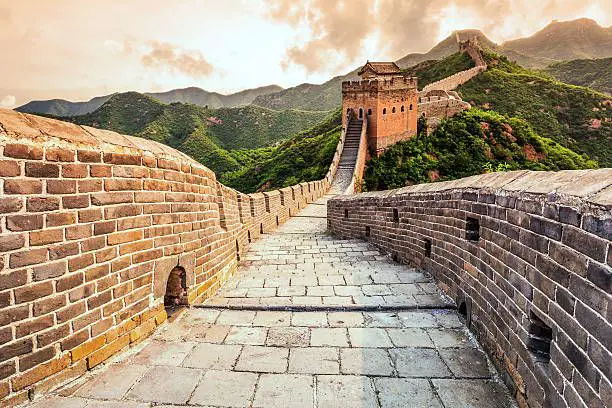
The Great Wall of China is a series of fortifications and walls that were built along the northern borders of China to protect against invasions from various nomadic groups.
The Great Wall stretches over 13,000 miles (21,000 kilometers) from the Shanhai Pass on the east coast to the Gobi Desert in the west.
The construction of the Great Wall began in the 7th century BC and continued through the Ming dynasty (1368-1644). The wall was built using a variety of materials, including brick, tamped earth, stone, and wood, and features watchtowers, fortresses, and barracks along its length.
The Great Wall of China is one of the most iconic landmarks in the world and is considered one of the greatest engineering feats in human history. It has played an important role in Chinese history and culture and is a symbol of the country's strength and endurance.
Today, the Great Wall is a major tourist attraction in China, drawing millions of visitors each year. Visitors can hike along sections of the wall, explore watchtowers and other fortifications, and learn about the history and significance of this incredible structure.
The Acropolis, Athens

The Acropolis is an ancient citadel located in Athens, Greece, and is one of the most famous landmarks in the world. It is situated on a rocky hill overlooking the city of Athens, and contains several important structures, including the Parthenon, the Propylaea, the Erechtheion, and the Temple of Athena Nike.
The Parthenon is perhaps the most famous building on the Acropolis and is considered to be one of the greatest examples of ancient Greek architecture.
It was built in the 5th century BC as a temple dedicated to the goddess Athena, and features intricate carvings and sculptural decorations.
The Propylaea is a monumental gateway that was built in the 5th century BC, while the Erechtheion is a temple dedicated to several gods and goddesses, including Athena and Poseidon. The Temple of Athena Nike is a small temple that was built in the 5th century BC to commemorate the Greek victory over the Persians.
The Acropolis has played an important role in Greek history and culture, and was the site of many important events, including religious ceremonies, civic gatherings, and theatrical performances. It has also been the site of several wars and conflicts throughout history, including the Persian Wars and the Greek War of Independence.
Today, the Acropolis is a major tourist destination and a symbol of Greek history and culture. Visitors can explore the various structures and learn about the rich history and significance of this incredible landmark.
Chichen Itza, Mexico
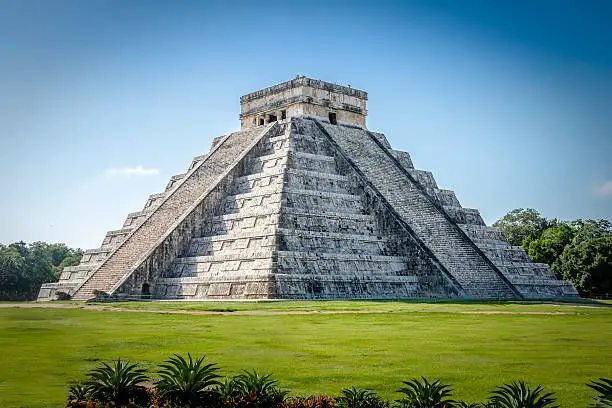
Chichen Itza is an ancient Mayan city located in the Yucatan Peninsula of Mexico. It was built by the Mayan people around 600 AD and was a major cultural, economic, and political center in the region for several centuries.
Chichen Itza features a variety of impressive structures, including the Temple of Kukulcan, the Great Ballcourt, the Temple of the Warriors, and the Cenote Sagrado.
The Temple of Kukulcan, also known as El Castillo, is a pyramid-like structure that was used for religious and astronomical purposes. It features four staircases, each with 91 steps, for a total of 364 steps, which, when added to the platform at the top, equals 365, the number of days in a solar year.
The Great Ballcourt is the largest and most impressive ball court in Mesoamerica, and was used for the Mayan ball game, which was a ritual sport played throughout the region.
The Temple of the Warriors is a large complex that features several impressive structures, including a large plaza and a number of smaller temples and shrines.
The Cenote Sagrado, or Sacred Cenote, is a natural sinkhole that was used by the Mayans for ritual offerings and sacrifices.
Chichen Itza was designated a UNESCO World Heritage Site in 1988 and is one of the most visited archaeological sites in Mexico, attracting millions of tourists each year. It is a must-visit destination for anyone interested in ancient civilizations and Mayan culture.
These are just a few examples of the many famous and impressive ancient ruins and archaeological sites that can be found around the world.
Each of these sites offers a unique glimpse into the history and culture of the societies that built them, and is well worth a visit for anyone interested in the past.
Technological Advances in Archaeology
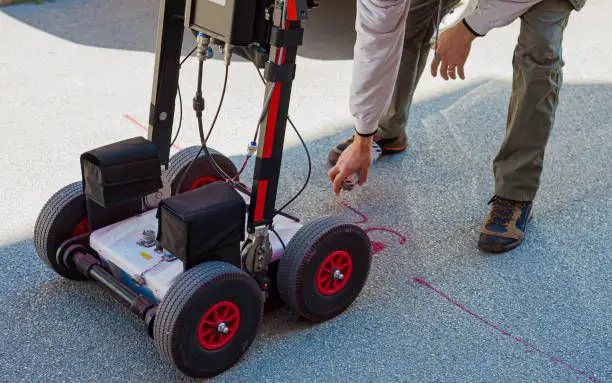
Technological advances have revolutionized the field of archaeology, making it possible to uncover new information and explore ancient sites in ways that were previously impossible. Here are some examples of technological advances in archaeology:
Remote Sensing: Remote sensing technologies, such as satellite imaging and LiDAR (Light Detection and Ranging), have made it possible to identify and map ancient sites without the need for ground-level surveying. This has greatly increased the efficiency of archaeological research and has helped to identify previously unknown sites.
3D Printing: 3D printing technology allows archaeologists to create replicas of ancient artifacts and structures, which can be studied and displayed without risking damage to the original objects. This technology has also made it possible to reconstruct broken or damaged artifacts, which can provide valuable insights into their original form and function.
Drones: Drones equipped with high-resolution cameras and LiDAR sensors have become increasingly popular in archaeology, allowing researchers to explore hard-to-reach sites and create detailed 3D models of archaeological sites and landscapes. Drones have also been used to monitor the condition of archaeological sites and to detect signs of looting or damage.
Ground-Penetrating Radar: Ground-penetrating radar is a non-invasive technique that allows archaeologists to see beneath the surface of the ground, revealing buried structures and artifacts that may not be visible to the naked eye. This technology can be used to map entire archaeological sites and to identify potential excavation sites.
DNA Analysis: Advances in DNA analysis have made it possible to study the genetic material of ancient humans and animals, providing insights into their origins, migrations, and interactions. DNA analysis has also been used to identify the species of plants and animals consumed by ancient societies, as well as the origins of ancient crops.
These are just a few examples of the many technological advances that have transformed the field of archaeology in recent years. As technology continues to evolve, it is likely that new and innovative tools will be developed to further our understanding of the past.
Unearthing the Past
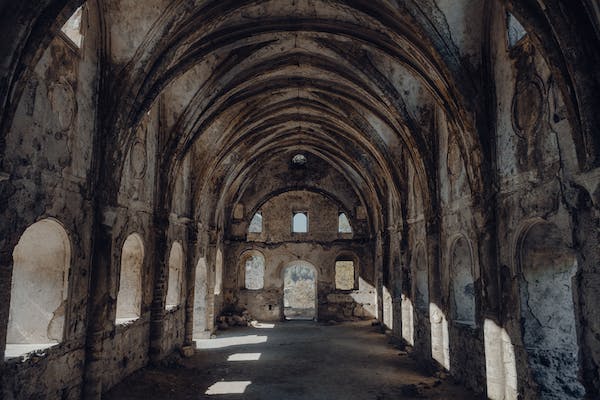
Unearthing the past is the process of excavating archaeological sites and uncovering artifacts and structures from ancient civilizations. This process can provide valuable insights into the history, culture, and daily life of past societies, and can help us understand how they lived, worked, and interacted with each other.
The process of unearthing the past involves several stages, including:
Site Identification: The first step in unearthing the past is identifying potential archaeological sites. This can involve reviewing historical records and maps, conducting surveys, and using remote sensing technologies to identify potential sites.
Excavation: Once a site has been identified, archaeologists begin the process of excavation. This involves carefully removing layers of soil and debris from the site, often using hand tools, to uncover artifacts and structures.
Analysis: After artifacts and structures have been uncovered, they are carefully cataloged, photographed, and analyzed in the lab. This can involve using a variety of techniques, such as radiocarbon dating, DNA analysis, and chemical analysis, to learn more about the artifacts and the people who created them.
Interpretation: Finally, archaeologists use the data they have gathered to interpret the findings and draw conclusions about the history and culture of the society that created them. This can involve comparing the artifacts to other known examples from the same time period or culture, and considering the broader historical and cultural context.
Unearthing the past is a complex and often time-consuming process, but it is essential for understanding the history of our world and the people who lived before us. It requires a combination of scientific expertise, patience, and attention to detail, and is constantly evolving as new technologies and techniques are developed.
Mysteries of the Past

The mysteries of the past refer to unanswered questions about ancient civilizations and historical events that continue to fascinate and intrigue us. Despite centuries of research and study, many questions about the past remain unanswered, leaving us to speculate and theorize about what may have happened or what may have been the purpose of certain artifacts or structures.
Here are a few examples of mysteries of the past:
The Construction of the Pyramids: The construction of the pyramids in Egypt is still a mystery, even though researchers have been studying them for centuries. How did the ancient Egyptians move the massive stones used in the construction, and how did they build such precise structures without modern tools and equipment?
The Disappearance of the Mayans: The Mayan civilization flourished in Central America for centuries before mysteriously disappearing in the 9th century. What caused the collapse of this once-great civilization, and where did the people go?
The Purpose of Stonehenge: Stonehenge is a prehistoric monument in England consisting of a ring of standing stones, but its purpose remains a mystery. Some theories suggest that it was used as an astronomical observatory, while others believe it had religious or ceremonial significance.
The Fate of the Roanoke Colony: The Roanoke Colony was a settlement established by English colonists in what is now North Carolina in the late 16th century. However, when a resupply mission arrived in 1590, the colony had disappeared, leaving behind only the cryptic message "Croatoan" carved into a post. What happened to the colonists remains a mystery.
The Origins of the Nazca Lines: The Nazca Lines are a series of large geoglyphs in southern Peru, but their purpose and origins are still unclear. Some theories suggest that they were used for astronomical observations or as a form of ritual communication, while others suggest that they were created for artistic or aesthetic purposes.
These are just a few examples of the many mysteries of the past that continue to intrigue researchers and capture our imagination. As new technologies and research techniques are developed, it is possible that we may one day uncover the answers to these and other questions about our ancient history.
Conservation and Preservation
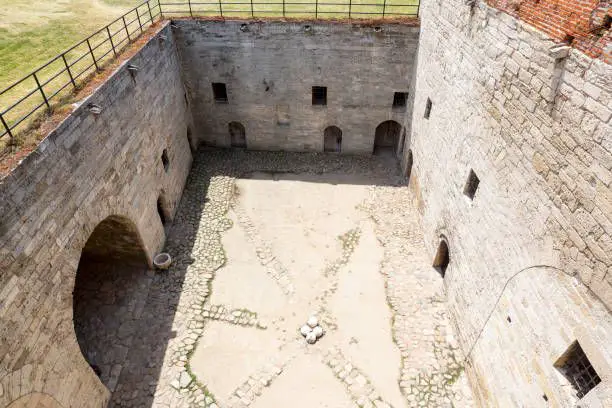
Conservation and preservation are two important aspects of protecting and maintaining our cultural heritage, including ancient ruins and archaeological sites.
Both conservation and preservation aim to ensure that these cultural resources are preserved for future generations to enjoy and learn from.
Conservation refers to the process of maintaining and repairing cultural resources in order to prevent further deterioration or damage.
This can involve a variety of techniques, including structural stabilization, cleaning, and the use of protective coatings or materials.
Conservation efforts are usually carried out by trained professionals, such as archaeologists or conservators, and are designed to minimize the impact of human activity and natural forces on the site or artifact.
Preservation, on the other hand, refers to the protection and maintenance of cultural resources in their existing condition.
This can involve limiting or controlling access to a site or artifact, as well as monitoring and managing the environment around it to prevent damage or deterioration.
Preservation efforts are often carried out by government agencies or nonprofit organizations that have a mandate to protect cultural resources and ensure their long-term survival.
Both conservation and preservation are important for maintaining our cultural heritage and ensuring that future generations can learn from and enjoy these resources.
Without these efforts, ancient ruins and archaeological sites can be lost to time, natural disasters, or human activities such as looting or development.
By investing in conservation and preservation, we can protect these valuable resources and ensure that they continue to inspire and educate us for generations to come.
Conclusion
Exploring ancient ruins and archaeological sites and embracing local cultures and traditions can provide valuable insights into the history, heritage, and diversity of our world.
These experiences can broaden our understanding and appreciation of the human experience, and help us to connect with different cultures and communities.
By traveling through time and immersing ourselves in local traditions, we can gain a greater understanding of our global heritage and foster greater respect and understanding among people of different backgrounds.
As we continue to explore the world around us, let us strive to celebrate and preserve the unique cultural expressions that make our world a vibrant and diverse place.
